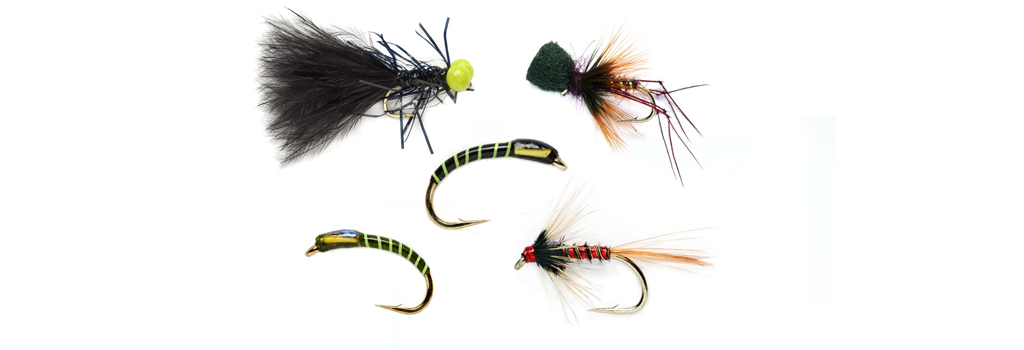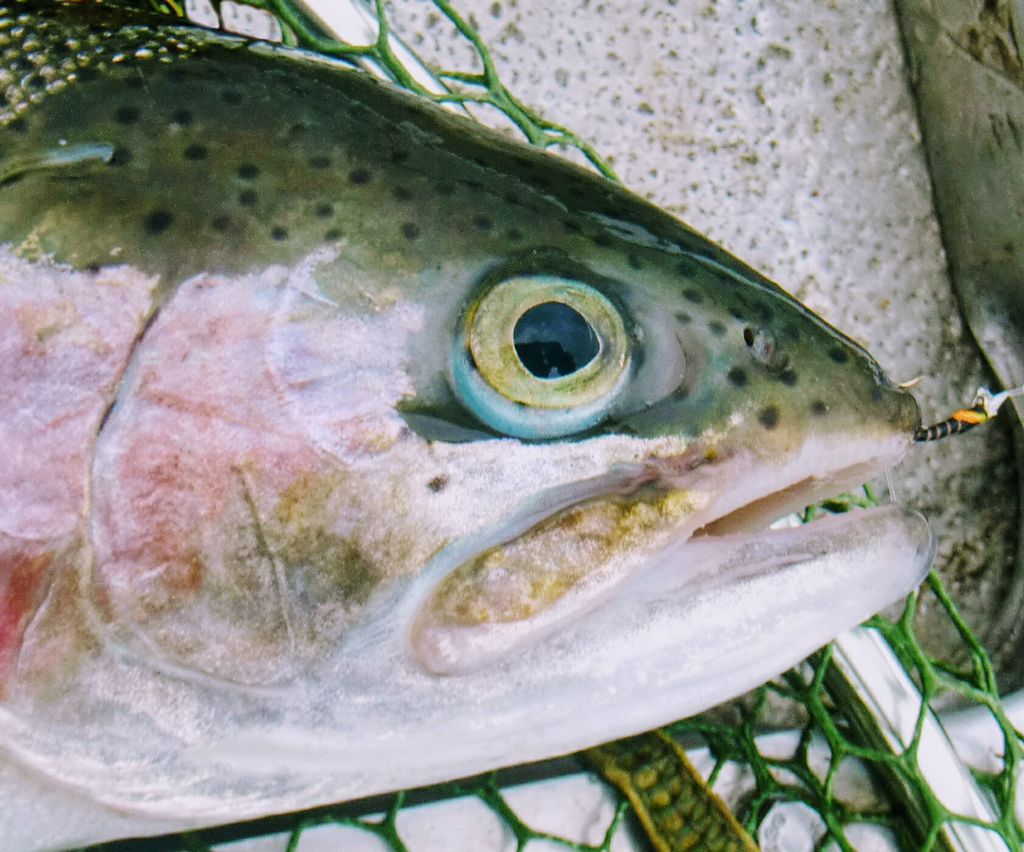A floater or 3 ft Tip from the bank
Very generally size 10 boobies with 4 or 5mm eyes are best as a point fly....or size 12 with 4mm eyes
The Washing Line Method is a generic term used to describe a floating point fly (usually a Booby, Fab or Popper Hopper) with nymphs on the droppers; it allows the angler to fish multiple flies in the killing zone.
It’s essential that you understand your tackle and flies and how slight changes in both can affect the depth you are fishing at, as it will allow you to increase your catch rate. Typically, this method is used when fishing a Floating, Midge Tip or Intermediate line when the fish are in the top 5ft of water. Although, it can be equally effective on faster sinking lines, usually down to a Di3
It’s fairly obvious that the larger the booby eyes (or amount of buoyancy in other patterns) then the higher the point fly will hold in the water.
However, the type and diameter of your leader material will play a huge part as to how the cast fishes and acts in the water…
The length of leader and spacings of flies will also drastically affect how deep your set up fishes, for example, a fluorocarbon leader with 7 – 10ft to the top dropper, then 2 further droppers spaced 3.5ft apart with a size 12 small eyed booby on the point (size 10 nymphs on the droppers ) will allow the angler to fish deeper than most anglers imagine – depths of 15 to 20ft are achievable with a slow retrieve in calm conditions. Although normally you would aim to fish the top 8ft of water
A buzzer feeder taken on the washing line method fished over weed-beds.
But for very shallow work, when the fish are concentrated in the top 3ft of water then you should opt for a copolymer leader, this is less dense and will not sink as fast as fluorocarbon, the leader should be shorter with 5ft to the top dropper then two further droppers spaced 3.5 ft apart (I would use size 12 or 14 nymphs on the droppers when fishing in the surface film)
However, you can just fish two droppers and a shorter leader if you are worried about tangles.
The size and type of fly will have a huge effect on how the leader fishes (epoxy buzzers will sink fast and pull the cast down, crunchers will hold up in the water, A size 10 fly (especially if tied on heavy wire hooks) will drag the cast down, including the point fly, allowing you to fish on the drop.
A simple range of flies in a range of sizes is all that is needed to cover a variety of depths depending upon conditions.
For the point fly, a booby is my preferred pattern to use, but a popper hopper is also a great way to keep the cast suspended when terrestrial insects are present.
If you find they are too heavy, try fishing smaller sizes to slow down sink rates.
Washing Line Method
Make a long cast, then make 2 pulls to strip the flies, this will straighten the leader and ensure that you are in direct contact with your cast, allowing you to feel the slightest of takes. It will also cause the floating point fly to skate across the surface hopefully drawing attention from nearby fish to your flies.
All that’s needed then is an ultra slow figure of 8, basically keeping in contact with your flies (if fishing on the drop) or retrieving them at a slow pace, all your flies will be held at the correct depth for longer, increasing your chances.
I find that the washing line method is most successful once the water has warmed up, and the fish are on the move; from May to October on overcast days or late summer evenings.
I consider it the most consistent method for catching still-water trout.
The slow retrieve allows you to essentially fish a lure (the booby) and nymphs on the same cast. It increases your options as it allows you to fish two different styles of flies at the same time. The flies compliment each other perfectly all you have to do is fine-tune the method and get the depth right.